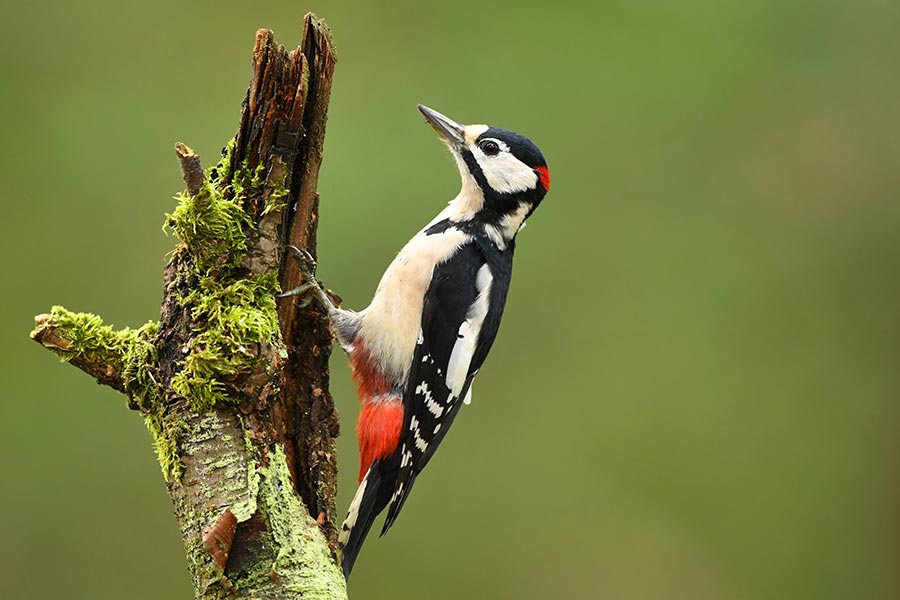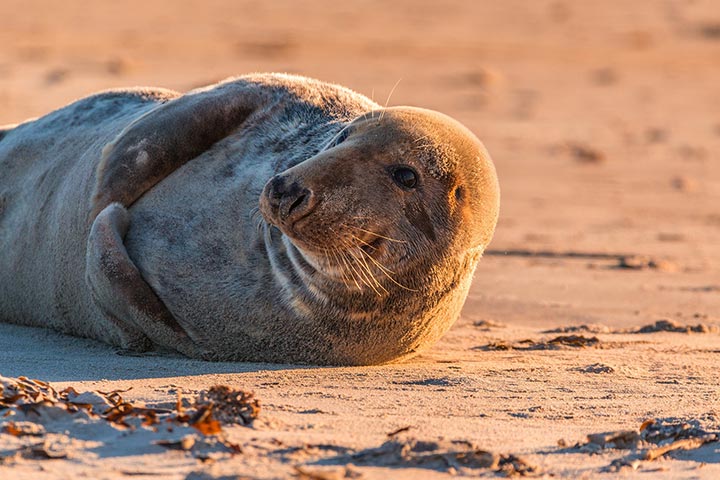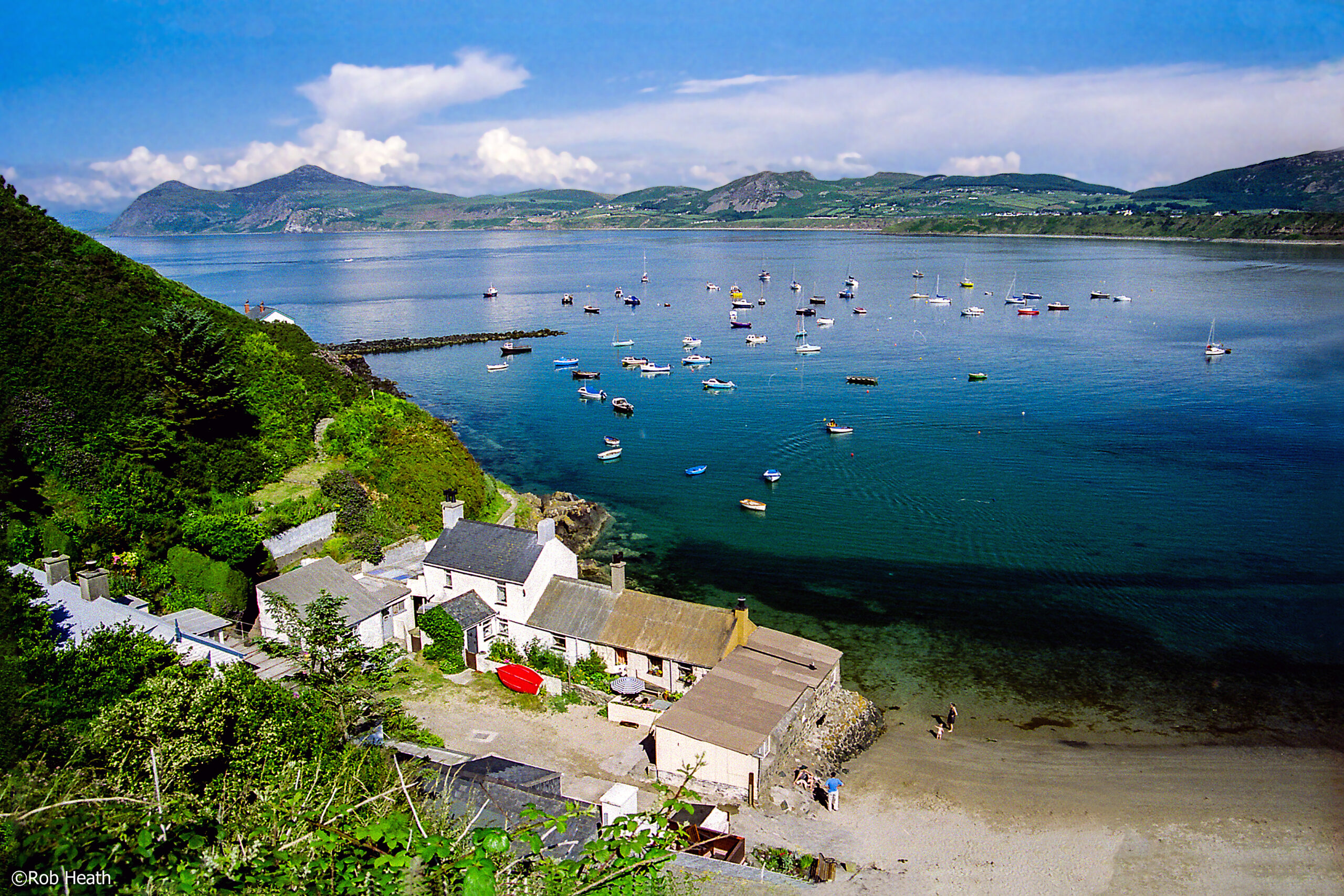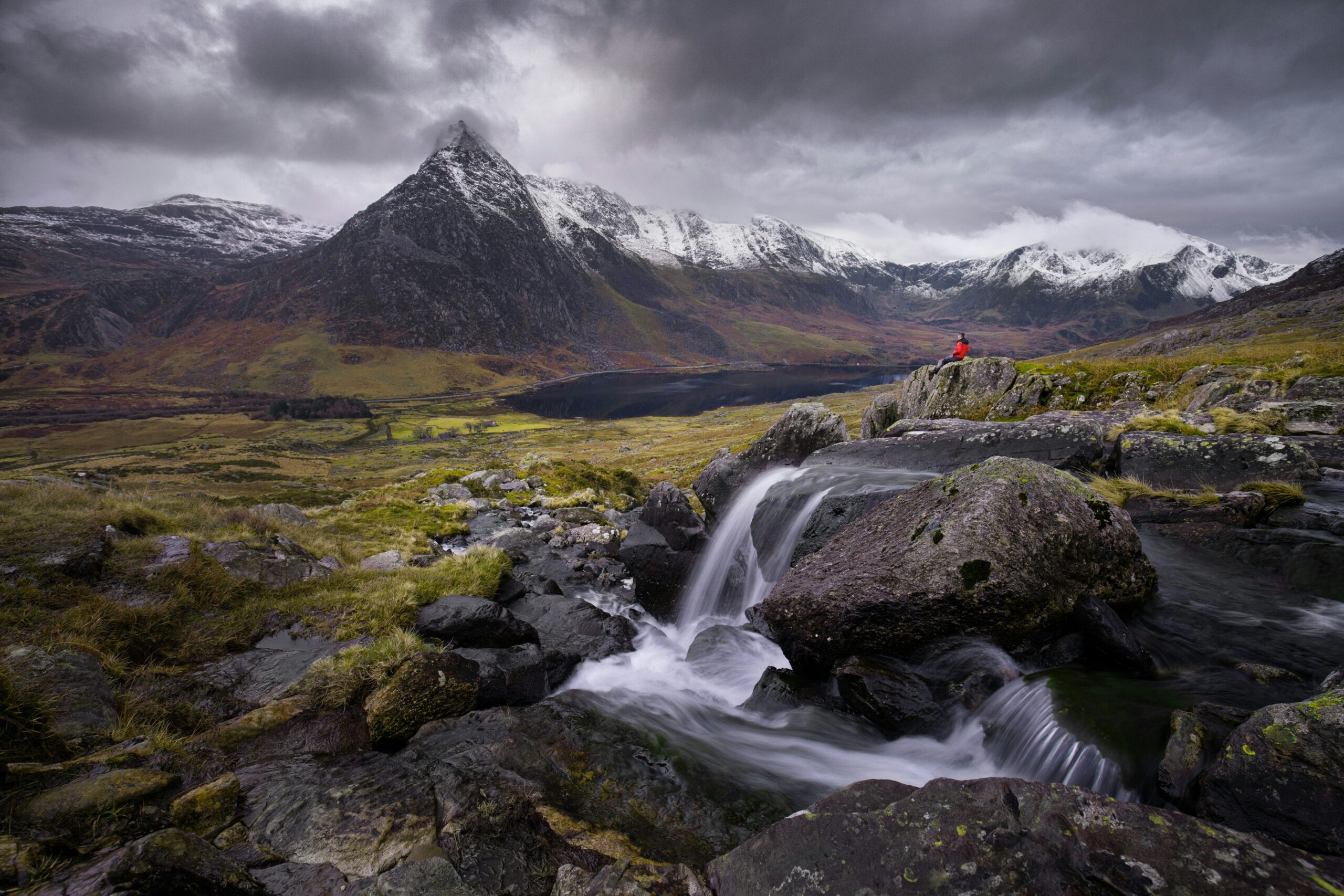The Isle of Anglesey holds a wealth of sites of natural interest and is one of the most rewarding areas for bird watching in Britain.
It has an incredible variety of habitats: sea cliffs, rocky shores, muddy and sandy estuaries, dunes, lagoons, large reservoirs, many small land heaths, coniferous and broad-leaf woods, scrub and mixed farmland. Only 25 miles across, the mainly flat island, has more wetlands than the mainland.
Just across the Menai Strait, only 10 miles from the island, are the mountains, moorland and hanging oak woods of Snowdonia.
The woodlands of Snowdonia are remarkable for their size, variety and sheer diversity of plants, many are ancient woodland sites on steep sided valleys – hanging oakwoods. Due to the humidity of the climate, one of the main features of these Welsh Atlantic woodlands are the mosses and liverworts. Coed Camlyn National Nature Reserve is one of the few Snowdonian woods where all three British species of woodpecker breed, though lesser spotted is still rather rare.

Anglesey is one of the finest places for sea-watching and is a focal point for migrants.
Seabirds are present in large numbers at South Stack Cliffs RSPB Reserve. In spring, the air is filled with birdsong as they compete to establish territory and attract a mate, South Stack situated on the northwest of Anglesey, gives excellent views of thousands of Guillemots and Razorbills, with smaller numbers of Puffins. As spring takes hold, watch out for choughs and ravens collecting material to build their nests and don’t miss the breeding seabirds crammed onto the narrow ledges on the cliffs in front of Ellin’s Tower. Stonechats are to be found at South Stack throughout the year.

Anglesey is important for its coastal heath, and its vast sand dunes on the west coast which includes Newborough Warren National Nature Reserve. Anglesey is also home to three tern species including the lovely Sandwich Tern (used on the logo for the Isle of Anglesey Coastal Path). The mild climate makes the island very attractive to wintering birds, especially wildfowl. In autumn and winter, the Llyn Alaw reservoir often holds impressive numbers of wildfowl.
Just off the eastern tip of Anglesey is the uninhabited Puffin Island (Ynys Seiriol in Welsh), designated a Special Protection Area on account of its large cormorant population. Other sea birds such as guillemot, razorbill, shag, kittiwake and eider ducks are also found. Don’t expect to see many puffins though as the puffins from which the island gets its name were decimated by the accidental introduction of rats in the late 19th century following a tragic shipwreck. A poisoning programme to rid the island of its rats has helped the puffins recover in recent years. You may also find gannets, choughs, peregrine flacons and storm petrels around the island.
Situated near the NW corner of Anglesey, Cemlyn Bay includes a large lagoon, separated from the sea by a spectacular, naturally-created shingle ridge. In the summer, the lagoon is the backdrop for Cemlyn’s most famous wildlife spectacle. Clustered on islands in the brackish water is a large and internationally important seabird colony, including breeding Common and Arctic Terns, and one of the U.K.’s largest nesting populations of Sandwich Terns. Around the reserve there are also areas of coastal grassland, farmland, scrub, wetland, and both rocky and sandy shore encircling Cemlyn Bay. These are home to a wealth of life – birds, mammals, insects, wildflowers and marine creatures.
Cemlyn has a good track record for rarities. Bridled Tern, Black-winged Stilt and Shorelark are amongst the ones that have been spotted here. Later in the year Cemlyn holds a good variety of wildfowl including Swans, waders can be found in the bay and sea duck, Grebes and Divers are also possible offshore.

North Wales offers some of the very best opportunities for the bird watcher. The rich diversity of Anglesey’s wildlife can often be seen from the coastal path. Grey seals are commonly seen from the Anglesey Coastal Path, up to three species of Dolphins, Porpoise and if you are very lucky you may catch site of Basking Sharks. Very occasionally even Orca and Minke Whales have also been spotted in the coastal waters of North Wales
Internationally important populations of birds and marine mammals, carpets of wild flowers in spring and some hidden secrets are all waiting to be discovered here on Anglesey!






